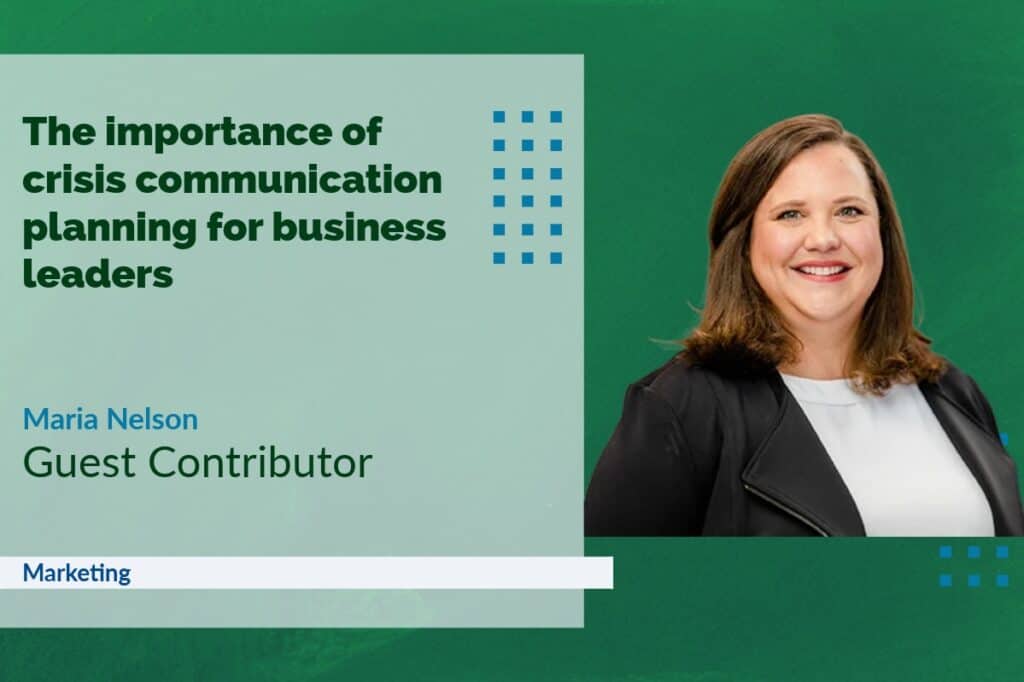
August 4, 2025
When faced with a crisis, businesses may respond in a variety of different ways.
One company may choose not to respond publicly – which in some cases could lead to distrust and appear as if they are hiding something.
While other organizations decide to proactively address an issue immediately – offering solutions and taking accountability.
When comparing the two responses, which would you choose for your company?
The difference in how your brand emerges after a crisis often comes down to the preparation and planning put in before a crisis occurs.
Be proactive, not reactive
No business leader wants to face a crisis, but it’s not a matter of if a crisis will happen – it’s a matter of when.
Smart leaders understand this inevitability and prepare accordingly.
Though many businesses have a crisis operations plan in place, one critical element is often overlooked: the crisis communication plan.
When a crisis strikes, what you say, or don’t say, could make or break your company’s reputation.
Clear, timely communication with employees, customers, stakeholders, the public and the media is essential to maintaining trust and brand loyalty.
Without a well-crafted crisis communication plan, businesses risk damaging their reputation, which can have long-term consequences on customer relationships and the bottom line.
A strong crisis communication plan acts as a safety net, equipping your company with pre-planned messaging and strategies tailored to different audiences and scenarios.
It helps ensure your response is thoughtful, consistent and effective, even in the most challenging situations.
Think of it as an insurance policy, not for your physical assets, but for your company’s reputation and brand image.
By preparing in advance, you can safeguard your brand and ensure readiness when disaster strikes.
Getting started
One of the first steps in preparing a crisis communication plan is a crisis communication audit. This critical process identifies vulnerabilities, evaluates existing communication
strategies (or lack thereof) and refines messaging to ensure clarity and consistency during a crisis.
Start by considering the top five crisis scenarios most likely to impact your business.
Identify key decision-makers, internal and external spokespersons and how they will communicate with their respective audiences and each other.
Do you have these roles and messages clearly outlined?
If not, it’s time to act.
Also, assess the technology platforms your organization uses: texting, email, phone, video chats and more.
Choose a single, reliable platform for your crisis response team (CRT) to ensure seamless, efficient communication.
Developing the crisis communication plan
Every crisis is unique, and while it’s impossible to prepare for every scenario, a well-crafted crisis communication plan ensures your business is ready to respond effectively.
Here are the key steps business leaders can take to develop a robust plan.
Identify target audiences
Determine the internal and external audiences you’ll need to communicate with during a crisis.
These may include board members, leadership, employees, vendors, partners, customers, first responders and the media.
Planning ahead ensures no key audience is overlooked when it matters most.
Build a crisis response team
Assemble a cross-functional team responsible for managing crisis communications.
Clearly outline the flow of information and designate a single communication channel for the team.
CRT members should be calm under pressure, discreet, critical thinkers and anticipatory.
Select, train spokespeople
Choose at least three spokespeople to represent your company during a crisis.
These individuals must deliver messages confidently, calmly and accurately under intense pressure.
Media training is essential to prepare them for high-stakes situations.
Communication channels
A lot of this information will be gathered during the crisis audit, but businesses should ensure there is an updated list of communication channels available for their business lines.
Document access details, including login and passwords.
Think beyond phones and emails to display boards, text messages, Zoom, Teams, social media accounts, newsletters and more.
Develop positive reinforcement messaging
Prepare messaging that highlights your company’s strengths, expertise and positive track record.
For example, if a construction company faces an OSHA fine, it could emphasize its overall safety record or recent safety awards to counter negative perceptions.
Plan and map out processes for crisis scenarios
Identify the top three to five crises most likely to impact your business.
These could include natural disasters, workplace accidents, cybersecurity breaches or customer dissatisfaction.
Develop a communication flow and messaging tailored to each scenario.
Draft crisis communication pieces
Create pre-written materials for each scenario, such as email drafts for board members, press releases, social media posts and employee letters.
These ready-to-use resources will save time and ensure consistency during a crisis.
Establish communication timing
Plan the sequence and timing of your communications to avoid surprises that could erode trust.
Thoughtful timing demonstrates transparency and helps maintain credibility with key audiences.
Crisis communication planning is never done
Crisis communication planning is never a one-and-done task.
The business landscape is constantly evolving, and new challenges, technologies and risks emerge every day.
To stay prepared, business leaders must view their crisis communication plan as a living document that requires regular updates, training and scenario testing.
By revisiting and refining the plan periodically, businesses can ensure they’re ready to respond effectively to whatever comes their way.
For business leaders, investing time and resources into crisis communication planning is not just about protecting the bottom line – it’s about safeguarding trust, credibility and relationships with employees, customers and stakeholders.
A well-prepared plan can mean the difference between weathering a storm with your reputation intact or facing long-term damage.
In today’s fast-paced, high-stakes world, being proactive isn’t optional – it’s essential.
 Stevens Point business continues to evolve with changes
Stevens Point business continues to evolve with changes Raise a glass to 150-plus years of brewing tradition
Raise a glass to 150-plus years of brewing tradition







